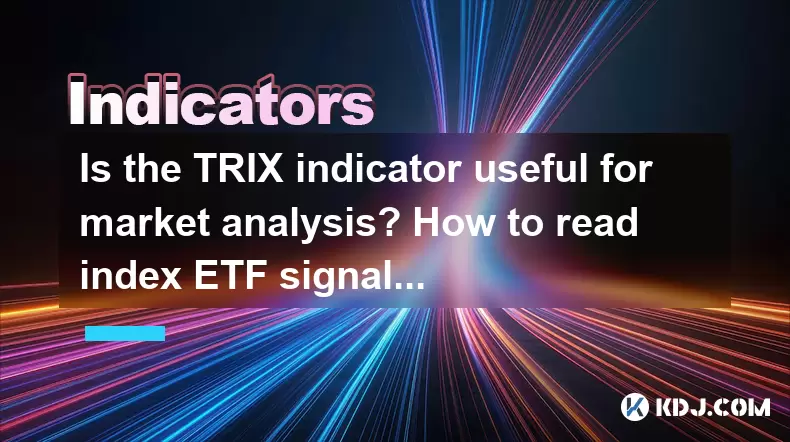-
 Bitcoin
Bitcoin $117900
-2.85% -
 Ethereum
Ethereum $4559
-2.84% -
 XRP
XRP $3.068
-5.67% -
 Tether USDt
Tether USDt $1.000
0.02% -
 BNB
BNB $836.7
-0.81% -
 Solana
Solana $193.2
-2.38% -
 USDC
USDC $0.9998
0.00% -
 TRON
TRON $0.3591
-0.32% -
 Dogecoin
Dogecoin $0.2238
-7.20% -
 Cardano
Cardano $0.9090
4.71% -
 Chainlink
Chainlink $22.55
-4.36% -
 Hyperliquid
Hyperliquid $44.78
-2.41% -
 Sui
Sui $3.771
-4.47% -
 Stellar
Stellar $0.4199
-6.18% -
 Bitcoin Cash
Bitcoin Cash $587.8
-5.02% -
 Ethena USDe
Ethena USDe $1.001
-0.01% -
 Hedera
Hedera $0.2493
-5.06% -
 Avalanche
Avalanche $23.66
-5.54% -
 Litecoin
Litecoin $121.0
-6.80% -
 Toncoin
Toncoin $3.383
-2.39% -
 UNUS SED LEO
UNUS SED LEO $9.287
0.47% -
 Shiba Inu
Shiba Inu $0.00001286
-6.48% -
 Uniswap
Uniswap $10.94
-9.06% -
 Polkadot
Polkadot $3.979
-5.53% -
 OKB
OKB $96.24
-3.88% -
 Dai
Dai $0.9997
0.00% -
 Bitget Token
Bitget Token $4.570
-4.16% -
 Cronos
Cronos $0.1510
-8.87% -
 Ethena
Ethena $0.7251
-6.96% -
 Aave
Aave $310.8
-4.73%
Is the TRIX indicator useful for market analysis? How to read index ETF signals?
The TRIX indicator, a momentum oscillator, helps traders identify trend reversals and generate signals in crypto markets, enhancing decision-making when combined with index ETF signals.
May 22, 2025 at 09:56 am

The TRIX indicator, or Triple Exponential Average, is a momentum oscillator used by traders to identify potential trend reversals and generate buy or sell signals in the cryptocurrency market. Understanding the TRIX indicator and its applications can significantly enhance a trader's ability to make informed decisions. This article will delve into the utility of the TRIX indicator for market analysis and provide a comprehensive guide on how to read index ETF signals within the context of cryptocurrency trading.
What is the TRIX Indicator?
The TRIX indicator is a technical analysis tool that calculates the rate of change of a triple-smoothed exponential moving average (EMA). It is designed to filter out insignificant price movements and focus on significant trends. The TRIX indicator is particularly useful for identifying overbought and oversold conditions in the market, which can signal potential entry or exit points for traders.
How Does the TRIX Indicator Work?
The TRIX indicator works by smoothing price data through three successive EMAs, typically calculated over a 15-day period. The formula for the TRIX is as follows:
- Calculate the first EMA of the closing prices.
- Calculate the second EMA of the first EMA.
- Calculate the third EMA of the second EMA.
- Calculate the percentage change of the third EMA to derive the TRIX value.
The resulting line oscillates around a zero line, with positive values indicating bullish momentum and negative values indicating bearish momentum. When the TRIX line crosses above the zero line, it is considered a bullish signal, and when it crosses below, it is considered a bearish signal.
Using TRIX for Market Analysis
To use the TRIX indicator effectively for market analysis, traders should focus on the following aspects:
- Divergence: Look for divergences between the TRIX line and the price action. A bullish divergence occurs when the price makes a lower low, but the TRIX makes a higher low, indicating weakening downward momentum. Conversely, a bearish divergence occurs when the price makes a higher high, but the TRIX makes a lower high, indicating weakening upward momentum.
- Signal Line Crossovers: The TRIX indicator often includes a signal line, which is a 9-day EMA of the TRIX line. When the TRIX line crosses above the signal line, it is considered a buy signal, and when it crosses below, it is considered a sell signal.
- Overbought/Oversold Conditions: The TRIX indicator can help identify overbought and oversold conditions. When the TRIX line moves above a certain threshold (e.g., +0.05), it may indicate an overbought condition, suggesting a potential sell opportunity. Conversely, when the TRIX line moves below a certain threshold (e.g., -0.05), it may indicate an oversold condition, suggesting a potential buy opportunity.
How to Read Index ETF Signals in Cryptocurrency Trading
Index ETFs, or exchange-traded funds, track a basket of assets and are often used as benchmarks for market performance. In the context of cryptocurrency trading, index ETF signals can provide valuable insights into market trends and sentiment. Here's how to read these signals effectively:
- Monitor ETF Performance: Start by monitoring the performance of cryptocurrency index ETFs, such as the Bitwise 10 Crypto Index Fund or the Grayscale Bitcoin Trust. These ETFs can provide a broad overview of the market's direction and sentiment.
- Volume and Liquidity: Pay attention to the trading volume and liquidity of these ETFs. High volume and liquidity can indicate strong market interest and confidence, which can be a bullish signal for cryptocurrencies.
- Correlation Analysis: Analyze the correlation between the performance of cryptocurrency index ETFs and individual cryptocurrencies. A strong positive correlation can indicate that the ETF's performance is a good predictor of individual cryptocurrency movements.
- News and Events: Keep an eye on news and events that may impact the performance of cryptocurrency index ETFs. Significant regulatory changes, institutional investments, or technological developments can influence ETF performance and, by extension, the broader cryptocurrency market.
Combining TRIX and Index ETF Signals
To maximize the effectiveness of market analysis, traders can combine the TRIX indicator with index ETF signals. Here's how to do it:
- Confirming Signals: Use the TRIX indicator to confirm signals generated by index ETF performance. For example, if an index ETF shows a bullish trend and the TRIX indicator also indicates bullish momentum, it can increase the confidence in a potential buy signal.
- Divergence Analysis: Look for divergences between the TRIX indicator and the performance of index ETFs. If the TRIX indicator shows bullish divergence while the index ETF is trending downward, it may suggest a potential reversal in the market.
- Overbought/Oversold Conditions: Use the TRIX indicator to identify overbought or oversold conditions in the market, and then check the performance of index ETFs to see if they align with these conditions. If both the TRIX indicator and index ETF performance suggest an overbought or oversold condition, it can provide a stronger signal for potential trades.
Practical Application: Using TRIX and Index ETF Signals in Trading
To illustrate how to apply these concepts in real trading scenarios, consider the following steps:
- Set Up Your Charts: Begin by setting up your trading charts with the TRIX indicator and the performance of a relevant cryptocurrency index ETF. Ensure that the TRIX indicator is correctly configured with the desired period settings.
- Analyze the TRIX Indicator: Monitor the TRIX line for crossovers with the zero line and the signal line. Look for divergences between the TRIX line and price action to identify potential trend reversals.
- Check Index ETF Performance: Simultaneously, keep an eye on the performance of the cryptocurrency index ETF. Note any significant movements, volume changes, or correlations with individual cryptocurrencies.
- Combine Signals: When the TRIX indicator and index ETF performance align, such as both indicating bullish momentum, it can provide a stronger signal for entering a trade. Conversely, if the signals diverge, it may warrant caution and further analysis.
- Execute Trades: Based on the combined analysis, execute trades accordingly. For example, if both the TRIX indicator and index ETF performance suggest a bullish trend, consider entering a long position on a promising cryptocurrency.
Frequently Asked Questions
Q1: Can the TRIX indicator be used on different timeframes?
Yes, the TRIX indicator can be applied to various timeframes, from short-term intraday charts to longer-term weekly or monthly charts. The effectiveness of the TRIX indicator may vary depending on the chosen timeframe, so it's essential to adjust the settings and interpret the signals accordingly.
Q2: Are there any limitations to using index ETF signals for cryptocurrency trading?
Yes, there are limitations to using index ETF signals for cryptocurrency trading. Index ETFs may not always accurately reflect the performance of individual cryptocurrencies, and their composition and weighting can change over time. Additionally, the liquidity and trading volume of some cryptocurrency index ETFs may be lower than desired, potentially affecting their reliability as signals.
Q3: How can I improve the accuracy of my TRIX and index ETF signal analysis?
To improve the accuracy of your TRIX and index ETF signal analysis, consider the following strategies:
- Use Multiple Indicators: Combine the TRIX indicator with other technical indicators, such as the Relative Strength Index (RSI) or Moving Average Convergence Divergence (MACD), to confirm signals and reduce false positives.
- Backtest Your Strategy: Conduct thorough backtesting of your trading strategy using historical data to assess its performance and identify areas for improvement.
- Stay Informed: Keep up-to-date with market news, regulatory changes, and technological developments that may impact the performance of cryptocurrencies and index ETFs.
Q4: Can the TRIX indicator be used for all cryptocurrencies, or is it better suited for specific ones?
The TRIX indicator can be used for all cryptocurrencies, but its effectiveness may vary depending on the specific cryptocurrency's volatility and trading volume. Cryptocurrencies with higher liquidity and trading volume may produce more reliable TRIX signals. For cryptocurrencies with lower liquidity, the TRIX indicator may generate more false signals, so it's essential to consider these factors when applying the indicator.
Disclaimer:info@kdj.com
The information provided is not trading advice. kdj.com does not assume any responsibility for any investments made based on the information provided in this article. Cryptocurrencies are highly volatile and it is highly recommended that you invest with caution after thorough research!
If you believe that the content used on this website infringes your copyright, please contact us immediately (info@kdj.com) and we will delete it promptly.
- Kazakhstan's Crypto Leap: Bitcoin ETF and Central Asia's Digital Finance Future
- 2025-08-13 12:45:19
- BlockDAG Presale Blazes Past $371M: Fundraising Frenzy Fuels Crypto Sensation
- 2025-08-13 13:05:21
- Meme Coins: Chasing the 2025 Surge – Which Will Moonshot?
- 2025-08-13 10:25:23
- Bitcoin's Wild Ride: Rally, Pullback, and What's Next
- 2025-08-13 10:25:23
- Bitcoin, Bitmax, and Institutional Demand: A New Era of Crypto Investment
- 2025-08-13 10:45:12
- Solana, ROAM, and Airdrops: What's the Buzz in 2025?
- 2025-08-13 11:35:13
Related knowledge

What does it mean when the +DI and -DI cross frequently in the DMI indicator but the ADX is flattening?
Aug 11,2025 at 03:15am
Understanding the DMI Indicator ComponentsThe Directional Movement Index (DMI) is a technical analysis tool composed of three lines: the +DI (Positive...

What does the sudden appearance of a "dark cloud cover" candlestick pattern during an uptrend indicate?
Aug 13,2025 at 11:35am
Understanding the 'Dark Cloud Cover' Candlestick PatternThe dark cloud cover is a bearish reversal pattern in technical analysis that typically appear...

What does it mean when the moving average, MACD, and RSI all send buy signals simultaneously?
Aug 11,2025 at 01:42pm
Understanding the Convergence of Technical IndicatorsWhen the moving average, MACD, and RSI all generate buy signals at the same time, traders interpr...

What does it mean when both the KDJ indicator and the RSI show overbought signals simultaneously?
Aug 13,2025 at 11:35am
Understanding the KDJ Indicator in Cryptocurrency TradingThe KDJ indicator is a momentum oscillator derived from the Stochastic Oscillator, widely use...

What does it mean when the price is trading above the SAR indicator but the red dots are densely packed?
Aug 09,2025 at 11:49pm
Understanding the SAR Indicator and Its Visual SignalsThe SAR (Parabolic Stop and Reverse) indicator is a technical analysis tool used primarily to de...

What does it mean when the candlestick chart forms a "Morning Star" but trading volume is sluggish?
Aug 12,2025 at 06:28pm
Understanding the Morning Star Candlestick PatternThe Morning Star is a three-candle bullish reversal pattern commonly observed in cryptocurrency pric...

What does it mean when the +DI and -DI cross frequently in the DMI indicator but the ADX is flattening?
Aug 11,2025 at 03:15am
Understanding the DMI Indicator ComponentsThe Directional Movement Index (DMI) is a technical analysis tool composed of three lines: the +DI (Positive...

What does the sudden appearance of a "dark cloud cover" candlestick pattern during an uptrend indicate?
Aug 13,2025 at 11:35am
Understanding the 'Dark Cloud Cover' Candlestick PatternThe dark cloud cover is a bearish reversal pattern in technical analysis that typically appear...

What does it mean when the moving average, MACD, and RSI all send buy signals simultaneously?
Aug 11,2025 at 01:42pm
Understanding the Convergence of Technical IndicatorsWhen the moving average, MACD, and RSI all generate buy signals at the same time, traders interpr...

What does it mean when both the KDJ indicator and the RSI show overbought signals simultaneously?
Aug 13,2025 at 11:35am
Understanding the KDJ Indicator in Cryptocurrency TradingThe KDJ indicator is a momentum oscillator derived from the Stochastic Oscillator, widely use...

What does it mean when the price is trading above the SAR indicator but the red dots are densely packed?
Aug 09,2025 at 11:49pm
Understanding the SAR Indicator and Its Visual SignalsThe SAR (Parabolic Stop and Reverse) indicator is a technical analysis tool used primarily to de...

What does it mean when the candlestick chart forms a "Morning Star" but trading volume is sluggish?
Aug 12,2025 at 06:28pm
Understanding the Morning Star Candlestick PatternThe Morning Star is a three-candle bullish reversal pattern commonly observed in cryptocurrency pric...
See all articles

























































































